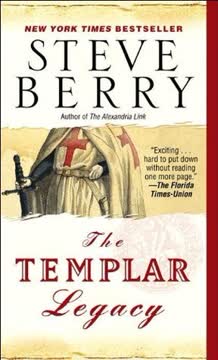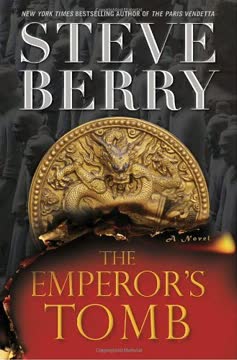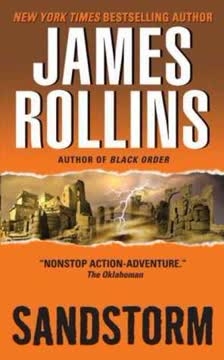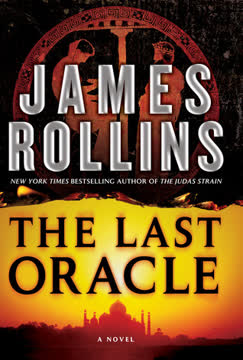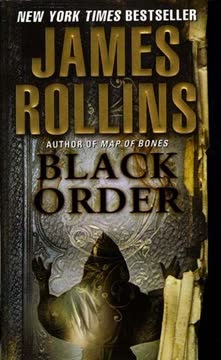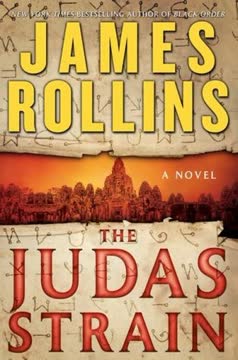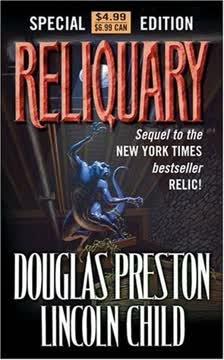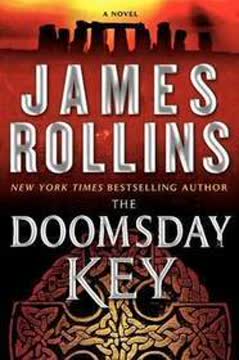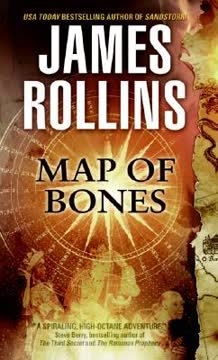Plot Summary
A Legacy of Betrayal Unfolds
In the Abbey des Fontaines, the Templar Order mourns the death of their master. During the funeral, Raymond de Roquefort, the ambitious marshal, challenges the master's legacy, accusing him of weakening the Order. The brothers vote to deny the master his rightful place in the Chronicles, signaling a shift in power. De Roquefort's ambition to lead the Order and reveal its secrets to the world becomes clear, setting the stage for a power struggle within the brotherhood.
Secrets Buried in the Past
Stephanie Nelle, widow of the late Lars Nelle, arrives in Rennes-le-Chateau, driven by guilt and a desire to understand her husband's obsession with the Templar treasure. She discovers that her husband's journal and a mysterious book, "Pierres Gravees du Languedoc," hold clues to a hidden treasure. As she delves deeper, she realizes the danger surrounding her quest, with shadowy figures watching her every move.
A Dangerous Pursuit Begins
Cotton Malone, a former agent, is drawn into Stephanie's quest after witnessing a man leap to his death in Copenhagen. As they travel to France, they are pursued by men intent on stopping them. Malone's instincts and training are put to the test as he navigates the treacherous path laid out by Lars Nelle's research, leading them to the enigmatic village of Rennes-le-Chateau.
The Enigma of Rennes-le-Chateau
In Rennes-le-Chateau, Stephanie and Malone explore the village's history, uncovering the story of Abbe Sauniere, who allegedly discovered a great treasure. They learn of a crypt beneath the church, filled with gold and jewels, and a false grave that holds a coded message. As they piece together the clues, they realize the significance of the Templar legacy and the danger it poses.
The Templar's Hidden Path
Royce Claridon, a former ally of Lars Nelle, joins Stephanie and Malone, revealing the connection between the cryptogram found by Sauniere and a painting in the papal palace in Avignon. The painting, "Reading the Rules of the Caridad," holds the key to the Templar's hidden path. As they search for the lithograph, they are pursued by de Roquefort and his men, who are determined to claim the Templar treasure for themselves.
A Race Against Time
As Stephanie and Malone race to uncover the Templar's secrets, they face betrayal and danger at every turn. De Roquefort's men close in, and the stakes are raised when they learn that the treasure is not just gold, but a cache of knowledge that could change history. With time running out, they must decipher the clues and find the treasure before it falls into the wrong hands.
The Final Confrontation Looms
The quest leads to a final confrontation in the papal palace, where the truth about the Templar treasure is revealed. As the storm rages outside, Stephanie and Malone face de Roquefort in a battle of wits and wills. The outcome will determine the fate of the Templar legacy and the future of those who seek its secrets.
A Treacherous Escape Unfolds
As the sun rises, de Roquefort and his men storm Cassiopeia Vitt's chateau, only to find themselves outwitted. Cassiopeia and her allies, including Cotton Malone and Stephanie Nelle, have already fled, leaving behind a group of workers dressed in medieval garb to mislead the intruders. De Roquefort, realizing he has been tricked, is left with no choice but to regroup and plan his next move. Meanwhile, the fugitives head towards the Pyrenees, determined to uncover the secrets of the Templar treasure.
Secrets of the Ossuary Revealed
Deep within the ruins of an ancient abbey, Malone and his companions uncover a hidden ossuary containing bones and a mysterious book. The book, written in Aramaic and Latin, reveals the testimony of Simon Peter, offering a radically different account of Jesus's life and death. This revelation challenges the very foundation of Christianity, suggesting that the resurrection was a spiritual awakening rather than a physical event. The group is left to ponder the implications of this discovery and the potential impact on the world.
A Deadly Confrontation Ensues
As Malone and his team explore the underground passages, they are ambushed by de Roquefort and his men. A tense standoff ensues, with de Roquefort demanding the secrets of the ossuary. Mark Nelle, driven by a desire to protect his father's legacy, confronts de Roquefort in a deadly struggle. In a moment of sacrifice, Mark uses a hidden trap to eliminate de Roquefort, ensuring the safety of his friends and the preservation of the Templar's secrets.
The Templar's Hidden Truth
The testimony of Simon Peter, found within the ossuary, offers a new perspective on the life of Jesus. It suggests that the resurrection was a metaphorical event, a spiritual rebirth within the hearts of his followers. This revelation challenges centuries of religious doctrine and raises questions about the true nature of faith. The group must decide whether to reveal this truth to the world or keep it hidden to preserve the status quo.
A Legacy of Redemption
As the dust settles, Stephanie and Mark Nelle find a new understanding and forgiveness for past grievances. The journey has brought them closer, allowing them to heal old wounds and embrace a future filled with hope. Cotton Malone, having played a crucial role in the adventure, returns to his life as a bookseller, content with the knowledge that he has helped preserve a legacy that could change the world.
Characters
Stephanie Nelle
Stephanie is driven by guilt over her estranged relationship with her late husband, Lars Nelle, and their son, Mark. Her quest to understand Lars's obsession with the Templar treasure leads her into a dangerous world of secrets and betrayal. As she delves deeper, she confronts her own regrets and seeks to honor her husband's legacy.
Cotton Malone
Malone is a former operative with a sharp mind and a knack for solving puzzles. His involvement in Stephanie's quest is reluctant at first, but his instincts and loyalty to an old friend compel him to help. As the danger escalates, Malone's skills are put to the test, and he must navigate a treacherous path to uncover the truth.
Raymond de Roquefort
De Roquefort is a cunning and ruthless leader within the Templar Order, determined to reveal the Order's secrets to the world. His ambition drives him to challenge the master's legacy and pursue the Templar treasure at any cost. His actions set off a chain of events that threaten the stability of the brotherhood.
Royce Claridon
Claridon is a former ally of Lars Nelle, hiding in a sanatorium to escape those who seek the Templar treasure. His knowledge of the Templar's secrets and his connection to Lars make him a valuable ally to Stephanie and Malone. As he guides them on their quest, his own motives and past come into question.
Lars Nelle
Though deceased, Lars's presence looms large over the narrative. His research into the Templar treasure and his cryptic journal drive the plot forward. His estranged relationship with Stephanie and his untimely death add layers of mystery and emotion to the story.
Geoffrey
Geoffrey is a young brother within the Templar Order, chosen by the master to assist the seneschal in uncovering the Great Devise. His loyalty and courage are tested as he aids in the escape from the abbey and the pursuit of the Templar's secrets.
Cassiopeia Vitt
Cassiopeia is a skilled and enigmatic figure who crosses paths with Malone and Stephanie. Her motives are unclear, but her involvement in the quest for the Templar treasure adds an element of intrigue and danger.
Mark Nelle
Mark, initially hesitant and burdened by his father's legacy, emerges as a leader. His journey through the Templar's secrets and his confrontation with de Roquefort reveal his inner strength and resolve. Mark's transformation is marked by his acceptance of responsibility and his commitment to guiding the Templar Order into a new era of service and redemption.
Plot Devices
The Templar Treasure
The Templar treasure is the central plot device, driving the characters' actions and motivations. It represents not only material wealth but also a repository of knowledge that could alter history. The quest to find it is fraught with danger and deception, as various factions vie for control.
The Cryptogram
The cryptogram found by Sauniere and later pursued by Lars Nelle is a key plot device, symbolizing the complexity and mystery of the Templar legacy. Its deciphering is crucial to uncovering the path to the treasure, and it serves as a catalyst for the characters' journey.
The Lithograph
The lithograph of the painting "Reading the Rules of the Caridad" is a significant plot device, providing a visual representation of the Templar's hidden path. Its discovery and interpretation are central to the characters' quest, linking the past to the present and guiding them toward the treasure.
The Ossuary
The ossuary, containing bones and a mysterious book, serves as a central plot device. It represents the hidden knowledge of the Templar Order and the potential to challenge centuries of religious doctrine. The discovery of the ossuary and its contents drives the narrative forward, forcing the characters to confront their beliefs and the implications of the truth.
The Testimony of Simon
The testimony of Simon Peter, found within the ossuary, offers a new perspective on the life of Jesus and the foundation of Christianity. This revelation challenges the characters to reconsider their beliefs and the nature of faith, serving as a pivotal plot device that raises questions about the true meaning of the Templar's secrets.
Analysis
"The Templar Legacy" by Steve Berry delves into the enduring allure of the Templar Order and the mysteries surrounding their legendary treasure. Through a blend of historical intrigue and modern adventure, the novel explores themes of faith, redemption, and the quest for truth. The characters' journeys are marked by personal growth and reconciliation, as they confront their pasts and embrace new beginnings. The book challenges readers to consider the impact of hidden knowledge on religious beliefs and the power dynamics within secretive organizations. Ultimately, it is a story of legacy—both personal and historical—and the choices that shape our understanding of the world.
Last updated:
FAQ
Synopsis & Basic Details
What is The Templar Legacy about?
- A Quest for Ancient Knowledge: The Templar Legacy plunges former Justice Department agent Cotton Malone into a perilous hunt for the Knights Templar's lost treasure, which is not merely gold but a cache of ancient knowledge that could redefine Christian history. The narrative begins with Stephanie Nelle, Malone's former boss, seeking a mysterious book connected to her late husband Lars Nelle's obsession with Rennes-le-Chateau, inadvertently drawing Malone into a centuries-old secret war.
- Unraveling Historical Mysteries: The story intricately weaves together historical figures like Jacques de Molay, Abbe Sauniere, and the Avignon Popes with modern-day intrigue, as Malone and Nelle follow cryptic clues hidden in gravestones, paintings, and ancient texts across Denmark and France. Their pursuit is shadowed by Raymond de Roquefort, an ambitious Templar marshal determined to seize the same secrets for the Order's reemergence.
- Personal Redemption and Revelation: Beyond the thrilling chase, the novel explores themes of personal legacy, forgiveness, and the nature of faith. Stephanie grapples with her estranged relationships with her deceased husband and son, while Malone confronts his own past as a government operative, ultimately leading to a profound discovery that challenges conventional religious beliefs and offers a chance for reconciliation.
Why should I read The Templar Legacy?
- Intricate Historical Conspiracy: Readers seeking a blend of historical fact and thrilling fiction will find "The Templar Legacy" captivating, as it delves into the enduring mysteries of the Knights Templar and their alleged hidden knowledge, offering a fresh perspective on well-known historical events and figures. The author's meticulous research, detailed in the "Writer's Note," adds a layer of authenticity to the speculative plot.
- Fast-Paced Global Thriller: Steve Berry's signature style delivers relentless action and suspense, moving from the streets of Copenhagen to the ancient abbeys of the French Pyrenees. The constant pursuit, narrow escapes, and unexpected twists keep the reader on edge, making it a compelling page-turner for fans of adventure and espionage.
- Deep Character Exploration: The novel offers a rich psychological landscape, particularly through Stephanie Nelle's journey of self-discovery and her complex relationship with her son, Mark. It explores themes of regret, forgiveness, and the search for meaning beyond professional success, adding emotional depth to the high-stakes plot.
What is the background of The Templar Legacy?
- Historical Templar Context: The novel is deeply rooted in the historical suppression of the Knights Templar in 1307 by Philip IV of France and Pope Clement V, exploring the enduring legend of their lost wealth and knowledge. It posits that the Order survived underground, maintaining its ancient traditions and secrets, including the "Great Devise" – a hidden truth about Christ.
- Rennes-le-Chateau Folklore: A significant portion of the background draws from the real-world mysteries surrounding Rennes-le-Chateau, a tiny French village where a 19th-century priest, Abbe Berenger Sauniere, allegedly discovered a treasure that funded his lavish church renovations. The book incorporates elements of the village's folklore, including cryptic gravestones and hidden messages, as clues to the Templar's secrets.
- Biblical and Theological Debates: The narrative delves into historical biblical scholarship, particularly the inconsistencies within the New Testament Gospels regarding Jesus's life, death, and resurrection. It introduces the concept of Gnostic Gospels and alternative interpretations of Christian doctrine, setting the stage for a profound theological debate at the story's core.
What are the most memorable quotes in The Templar Legacy?
- "It has served us well, this myth of Christ.": This epigraph, attributed to Pope Leo X, immediately sets a provocative tone for the novel, hinting at the central theme of challenging established religious narratives and the power dynamics inherent in faith. It foreshadows the controversial revelations about Christ's life and the Church's historical actions.
- "There is nothing hidden that will not be revealed.": Quoted from The Gospel of Thomas, this recurring motif encapsulates the core quest of the characters – the relentless pursuit of concealed truths, whether historical, personal, or theological. It underscores the idea that secrets, no matter how ancient or deeply buried, eventually come to light, driving the plot's relentless unraveling.
- "In ending life we find life. Loving is to be loved.": This profound statement from "The Testimony of Simon" (Chapter 65) encapsulates the novel's ultimate philosophical revelation about the nature of resurrection and faith. It shifts the understanding of Christ's legacy from a literal physical event to a spiritual and moral imperative, offering a powerful message of redemption and purpose.
What writing style, narrative choices, and literary techniques does Steve Berry use?
- Propulsive Pacing and Cliffhangers: Berry employs a high-octane, relentless pace, often ending chapters with immediate threats or shocking revelations to compel the reader forward. This technique, evident from Malone's initial pursuit in Copenhagen to the underground confrontations, creates a constant sense of urgency and excitement, a hallmark of the thriller genre.
- Interweaving Historical Detail with Fiction: A key narrative choice is Berry's seamless integration of meticulously researched historical facts, real-world locations, and genuine historical figures with a speculative, fictional plot. He often uses "Writer's Notes" to delineate fact from fiction, inviting readers to engage with the historical context while enjoying the adventure.
- Multiple Perspectives and Shifting POVs: The narrative frequently shifts between the perspectives of various characters—Cotton Malone, Stephanie Nelle, Raymond de Roquefort, and later Mark Nelle and Geoffrey—providing a comprehensive view of the unfolding conspiracy. This allows for dramatic irony, as readers often know more than individual characters, and builds suspense by showing different facets of the Templar conflict.
Hidden Details & Subtle Connections
What are some minor details that add significant meaning?
- The Round Tower's Ironwork: Caspar Fincke's iron grating atop Copenhagen's Round Tower, designed low for easy leaps, subtly foreshadows the Red Jacket's suicidal jump. This detail, initially a historical anecdote, becomes a chilling symbol of the Templar's extreme loyalty and willingness to die for their secrets, highlighting the ruthless nature of the Order's hidden factions.
- Sauniere's Inverted Pillar: The Visigoth pillar in Rennes-le-Chateau, inverted by Abbe Sauniere with "Mission 1891" and "Penitence, Penitence" carved on it, is a crucial, often overlooked, visual clue. Malone's realization that inverting "1891" yields "1681" (the incorrect death date on Marie d'Hautpoul's gravestone) reveals Sauniere's clever use of reversals and hidden patterns, a key to deciphering the Templar's complex messages.
- The "O" in Roman Numerals: The seemingly erroneous "O" in the Roman numeral date "MDCOLXXXI" on Marie d'Hautpoul's gravestone is a subtle but vital detail. Claridon's explanation that there is no zero in Roman numerals, combined with the fact that Marie died in 1781, not 1681, points to an intentional misdirection by Abbe Bigou, forcing a deeper, coded interpretation of the inscription.
What are some subtle foreshadowing and callbacks?
- De Molay's Shroud and Rebirth: The prologue's detailed description of Jacques de Molay being wrapped in a "white burial shroud" from the Templar chest, mocked as "reborn," subtly foreshadows the later revelation that the Shroud of Turin actually bears de Molay's image. This callback transforms a moment of humiliation into a symbolic act of enduring legacy, linking the Order's past suffering to its hidden survival.
- The "Beware the Engineer" Warning: The cryptic warning "prend garde l'Ingenieur" (beware the engineer) in the letter to Ernst Scoville subtly foreshadows Cassiopeia Vitt's later appearance and her complex, often ambiguous, role. It hints at her formidable skills and independent agenda, creating initial suspicion that later evolves into an understanding of her as a powerful, albeit unpredictable, ally.
- The Master's Prophetic Insights: The dying Templar Master's seemingly prescient statements to Geoffrey and the Seneschal about future events, such as de Roquefort's victory in the conclave and the Seneschal's "destiny," subtly foreshadow the intricate, pre-planned nature of the quest for the Great Devise. This suggests a deeper, almost mystical, understanding of the Order's fate, orchestrated by the Master even in death.
What are some unexpected character connections?
- Lars Nelle and Henrik Thorvaldsen's Secret Friendship: The revelation that Henrik Thorvaldsen, a powerful Danish magnate, was a close friend and financial supporter of Lars Nelle, despite public appearances of animosity, is a significant unexpected connection. This hidden alliance reveals Thorvaldsen's deep, long-standing involvement in the Templar quest and his strategic manipulation of events, including his "theft" of Malone from the Justice Department.
- Geoffrey's Dual Loyalty: Geoffrey, initially presented as the Seneschal's loyal aide, is unexpectedly revealed to be a double agent, secretly bound by oath to the former Master to ensure de Roquefort's success and the ultimate discovery of the Great Devise. This complex loyalty highlights the Master's intricate long-term planning and Geoffrey's profound commitment to a higher purpose beyond immediate allegiances.
- Mark Nelle's Templar Identity: The most unexpected connection is Mark Nelle's survival and his subsequent induction into the Templar Order, rising to the rank of Seneschal. This transforms him from a grieving son into a central figure in the Templar power struggle, directly linking Stephanie's personal quest for understanding to the heart of the Order's hidden world.
Who are the most significant supporting characters?
- Geoffrey: The Master's Secret Instrument: Geoffrey, initially appearing as a minor aide, becomes a pivotal character whose unwavering loyalty to the former Master orchestrates key events. His calculated "betrayal" of Mark and the Seneschal, and his role in guiding de Roquefort to the Great Devise, reveal him as a crucial, self-sacrificing agent of the Master's grand plan, far more significant than a mere supporting brother.
- Royce Claridon: The Unwitting Oracle: Claridon, the eccentric scholar feigning madness, serves as a vital, albeit unreliable, source of information. His deep knowledge of Lars Nelle's research and the Rennes-le-Chateau mysteries, combined with his accidental role as de Roquefort's informant, makes him a catalyst for plot progression, despite his perceived instability.
- The Templar Chaplain: The Moral Compass: The unnamed Chaplain emerges as a significant supporting character by consistently challenging de Roquefort's ruthless methods and advocating for the Order's traditional piety. His moral authority and eventual leadership in the conclave after de Roquefort's death highlight the internal ideological struggle within the Templars and the enduring power of their spiritual core.
Psychological, Emotional, & Relational Analysis
What are some unspoken motivations of the characters?
- Stephanie's Guilt-Driven Quest: Stephanie's primary unspoken motivation is profound guilt over her estranged relationship with Lars and Mark, particularly Lars's suicide. Her pursuit of the Templar mystery is less about the treasure and more about seeking posthumous reconciliation and understanding, hoping to find a way to atone for her past emotional distance.
- Malone's Search for Purpose: Cotton Malone's initial reluctance to get involved, followed by his deep immersion, is driven by an unspoken need for purpose beyond his retired life. The thrill of the chase and the intellectual challenge of the puzzle fill a void left by his demanding government career, offering a new form of "being shot at" that he secretly craves.
- De Roquefort's Desire for Vengeance: Beyond simply leading the Order, Raymond de Roquefort is motivated by a deep-seated desire for historical vengeance against the Catholic Church for the Templars' 14th-century persecution. His ambition to reveal the Great Devise is fueled by a personal sense of injustice and a need to clear the Order's name, even if it means resorting to violence.
What psychological complexities do the characters exhibit?
- Stephanie's Emotional Armor: Stephanie exhibits psychological complexity through her struggle to reconcile her professional competence with her personal failures. Her "stony expression" and "calm face" often mask deep-seated regret and vulnerability, particularly concerning her family, revealing a woman who has built emotional walls to cope with past pain.
- Mark's Identity Crisis: Mark Nelle grapples with a profound identity crisis, torn between his father's legacy, his mother's disapproval, and his unexpected immersion into the Templar Order. His initial bitterness towards Stephanie and his later acceptance of leadership reflect a journey from youthful resentment to mature self-awareness and purpose.
- Thorvaldsen's Benevolent Manipulation: Henrik Thorvaldsen presents a complex psychological profile as a benevolent manipulator. His actions, though seemingly for the greater good (protecting Lars, guiding Stephanie and Malone), involve significant deception and control, highlighting the moral ambiguities of achieving noble ends through questionable means.
What are the major emotional turning points?
- Stephanie's Confrontation with Guilt: A major emotional turning point for Stephanie occurs when she admits her regrets about Lars and Mark, particularly after reading Lars's journal pages about his mistress and his need for unconditional love. This moment of vulnerability, shared with Malone, marks a shift from her guarded professional persona to a more open, emotionally driven quest for family reconciliation.
- Mark's Acceptance of His Father's Legacy: Mark's emotional turning point is his realization that his father's "dreams had a basis" and that the Templar quest was not "futile." This acceptance, particularly after reading "The Testimony of Simon", allows him to shed his cynicism and embrace a leadership role within the Order, transforming his inherited burden into a chosen purpose.
- Geoffrey's Sacrifice and Loyalty: Geoffrey's deliberate act of "betrayal" and subsequent execution by de Roquefort is a powerful emotional turning point, revealing the depth of his loyalty to the former Master's long-term plan. His calm acceptance of death, despite Mark's rage, underscores the profound, almost spiritual, commitment within the Order and the tragic cost of their hidden war.
How do relationship dynamics evolve?
- Malone and Stephanie's Shifting Partnership: Their relationship evolves from a professional boss-employee dynamic to a reluctant, then deeply trusting, partnership. Initially, Stephanie pushes Malone away, but as danger escalates and her emotional vulnerabilities surface, she comes to rely on his field expertise and unwavering loyalty, transforming their bond into a genuine friendship.
- Mark and Stephanie's Path to Forgiveness: The most significant relational evolution is between Mark and Stephanie. Their initial estrangement, marked by bitterness and unspoken accusations, gradually gives way to a fragile understanding. Mark's return from presumed death forces a confrontation of past grievances, culminating in a tentative step towards forgiveness and a shared purpose in the Templar legacy.
- The Templar Order's Internal Strife: The internal dynamics of the Templar Order shift dramatically with the death of the Master and de Roquefort's rise. The initial challenge to the Master's legacy and the subsequent violence expose deep ideological rifts between traditionalists and radicals, ultimately leading to a "revolt" and the emergence of a new, more outwardly focused leadership under Mark.
Interpretation & Debate
Which parts of the story remain ambiguous or open-ended?
- The Full Extent of the Former Master's Plan: While the Master's long-term strategy to bring the Great Devise to light and ensure a new Templar leadership is revealed, the precise details of his foresight and manipulation remain somewhat ambiguous. The extent to which he truly "knew all" and orchestrated every twist, including Geoffrey's sacrifice, is left to the reader's interpretation, hinting at a near-omniscient intelligence.
- The Future of the Templar Order: The ending, with Mark Nelle as the new Master and the Order re-emerging into the world through charitable work, leaves the long-term impact of their new direction open-ended. It's debatable whether this "new course" will truly redeem their historical image or if their hidden knowledge will inevitably lead to new conflicts with established powers.
- The Authenticity of "The Testimony of Simon": While the novel presents "The Testimony of Simon" as a potentially authentic, game-changing document, its ultimate historical veracity within the fictional world remains ambiguous. The characters choose to keep it secret, leaving the reader to ponder its implications without definitive external validation, mirroring real-world debates about lost gospels.
What are some debatable, controversial scenes or moments in The Templar Legacy?
- The Shroud of Turin's True Subject: The controversial assertion that the Shroud of Turin bears the image of Jacques de Molay, not Jesus Christ, is a highly debatable moment. This challenges a deeply held Christian relic, forcing readers to confront the intersection of faith, historical evidence, and potential deception, aligning with the novel's theme of questioning established narratives.
- Lars Nelle's Suicide vs. Murder: The ambiguity surrounding Lars Nelle's death—initially presented as suicide but later implied to be murder by de Roquefort—is a controversial point. This raises questions about the reliability of information and the lengths to which factions will go to control knowledge, leaving the reader to weigh the evidence and decide Lars's true fate.
- The Templar's Justification for Violence: The Templar Order's historical and contemporary use of violence, particularly de Roquefort's "malicide" philosophy (killing evildoers is not homicide), presents a controversial ethical dilemma. The novel debates whether their historical persecution justifies their modern-day ruthlessness, forcing readers to consider the morality of vengeance and the blurred lines between justice and extremism.
The Templar Legacy Ending Explained: How It Ends & What It Means
- The Great Devise Revealed: The climax of The Templar Legacy sees Mark Nelle and Raymond de Roquefort discover the Great Devise within the ruined St. Agulous abbey: an ossuary containing bones identified as "Yeshua Bar Yehosef" (Jesus, son of Joseph) and a small book titled "The Testimony of Simon". This ancient text, purportedly written by Simon Peter, offers a non-supernatural account of Jesus's life and a spiritual, rather than literal, resurrection, suggesting that Jesus's legacy lived on through the actions and beliefs of his followers.
- De Roquefort's Demise and Mark's Ascension: The ending culminates in a deadly confrontation where Mark Nelle, guided by his understanding of the abbey's traps and his newfound resolve, sacrifices himself to eliminate de Roquefort by luring him into a spiked pit. This act of self-sacrifice ensures the Great Devise falls into the right hands and paves the way for Mark to be unanimously elected as the new Master of the Templar Order, fulfilling the former Master's intricate plan.
- A New Templar Legacy and Personal Redemption: Under Mark's leadership, the Templar Order chooses a new path: to re-emerge from the shadows not for revenge or to expose historical "lies," but to dedicate their vast resources to global charitable causes like AIDS relief and famine prevention. This signifies a legacy of redemption for the Order and, more personally, for Mark and Stephanie, who reconcile and find peace in their shared purpose, choosing to keep the controversial "Testimony of Simon" sealed to avoid global religious upheaval.
Review Summary
The Templar Legacy receives mixed reviews, with ratings ranging from 1 to 5 stars. Positive reviews praise the historical research, engaging plot, and fast-paced action. Critics compare it favorably to Dan Brown's work. Negative reviews cite slow pacing, weak characterization, and excessive historical details. Some readers find the religious themes controversial. Overall, the book is seen as an entertaining thriller with a focus on Templar history and religious conspiracy theories, though opinions vary on its execution and appeal.
Cotton Malone Series
Similar Books
Download PDF
Download EPUB
.epub digital book format is ideal for reading ebooks on phones, tablets, and e-readers.
